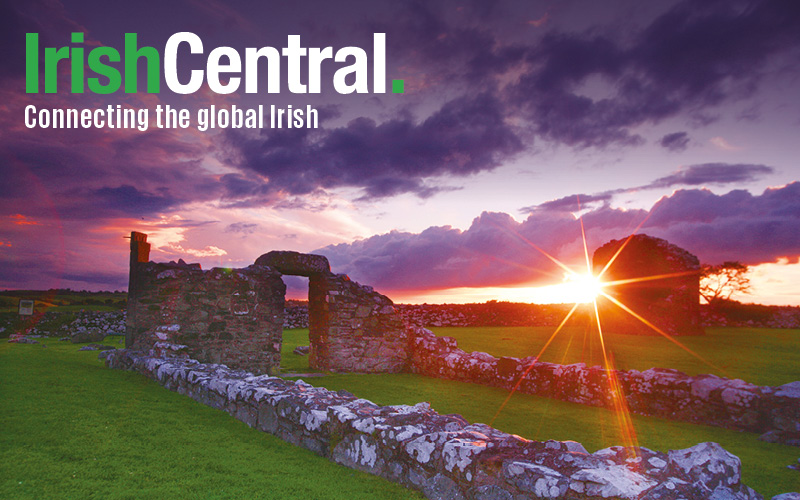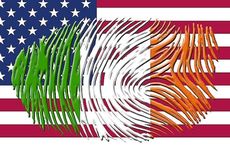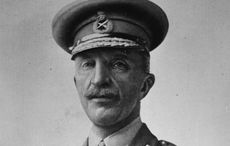The Irish 'Census' of 1659
If you have come to a dead end with your 19th century research - start here! Find out where your family is located in the 1600’s.
Oh, yes, and don’t forget that your name was sometimes spelled differently than the way you spell it today.
Surviving the great events of the 17th century are rare annals in which our families are found. I recommend that you become familiar with them. It will pay you to know where your family was, or where it might have been at that time. We will outline some of these Annals here. They will help you make a very educated guess as to where your family is found in these turbulent times.
Rev. Geoffrey Keating. Brother Michael O'Clery
These two men, compiled two of the greatest histories ever written on Ireland. Geoffrey Keating was born in Co. Tipperary around 1569. He would go to study in Europe and return to Ireland in 1610. He is the author of Keatings 'History of Ireland'.
Old Gaelic Works As the 17th century began, these two histories did not exist. By the close of the century the old Gaelic way of life had been crushed. A few thoughtful men saw what was coming. In a final desperate attempt to record their heritage, they recorded it in these great histories. Something must have been in the air. Fergal O'Gara, lord of Moy O'Gara, sponsored the work of the Four Masters. The O'Gara would soon thereafter be stripped of his hereditary lands in County Donegal. His fate was not unique among the Irish. The census of 1659 would also survive. It helped record the transfer of land ownership from the Irish to the new settlers from Scotland and England.
Brother Michael O'Clery was born in Kilbarron Castle in County Donegal. O'Clery would also travel to Europe and return to Ireland. He was the primary author of the 'Annals of Ireland' by the Four Masters. Both O'Clery and Keating would complete their histories by 1636. Both works were written only in the Gaelic language. The two histories are very different however, in form and style.
The North of Ireland Also of note in the 17th century is the military defeat and exile of the 'wild geese' of Ireland. Many would end up in Europe. 'King James's Irish Army list' attempts to list every member in the ranks of the defeated Irish army, along with family history notes of any sort available.
Another book we will consider here is 'The Conquest of Ireland"... An Historical and Genealogical Account of the Plantation in Ulster, by the Rev. George Hill. It records just how the Irish lost their lands, and what specific individuals assumed the ownership in the 17th century. Both the census of 1659; and the work by Hill give family researchers specific names and locations of families in that time period.
17th Century Annals are remarkable:
1609 - Conquest of Ireland, an historical and genealogical account.
1634 - Keatings History of Ireland completed in Gaelic.
1636 - Annals of Ireland by the Four Masters, completed in Gaelic.
1659 - 'The 1659 Census of Ireland'.
1689 - King James's Irish Army List, records the 'Wild Geese'.The Wild Geese, Exiled Irish Army 1689
Those who fought on the Irish side
John D'Alton,, born in 1792, compiled "King James's Irish Army List" in 1855. It focuses on the men who fought on the Irish side, who lost the battle, and were sent into exile as the Wild Geese of Ireland. The great civil war of 1689 spilled much blood and destroyed many families. Here is an attempt to gather all that was known on each family, sometimes tracing a them down to the 19th century. Some of D'Altons source materials have been lost to time, but his book remains as a one of a kind reference work.
Rebirth of the Irish Heritage
1843 - Tribes & Customs of Hy Many (Ui Maine)
1844 - Tribes, Customs & Genealogies of Hy Fiachrach
1846 -52 - First Translation of the Four Masters
1855 - King James's Irish Army List 1689, first published.
1857 - O'Mahoney translates Keatings History
1864 - A History of the Clanna Rory.
1880 - Genealogical History of Milesian Families
1890 - Birth Index of IrelandRebuilding the Character of a Nation
We have seen how the greatest annals of the 17th century were compiled just before the final fall of the Irish. The coming of Cromwell and penal laws changed the face of Ireland. It was not until some 250 years later that the Irish would reclaim their own history. Both the 'Annals', and Keatings 'History', are published in reliable English for the first time in the mid 19th century. The 'Annals of the Four Masters' was first translated into English by Connellan in 1846!
O'Donovan at the forefront
John O'Donovan would help spearhead the revival of Irish history. In 1843 he published the "Tribes and Customs of the Hy Many", which covers Galway and Roscommon. The original Gaelic language version was on the left hand page, and the English translation on the right hand page of his book. Likewise, he translated and published "The Tribes, Customs and Genealogies of the Hy Fiachrach", which covered Counties Mayo and Sligo, in the same format in 1844. We have published both of the foregoing works, in their original form, including the original Gaelic and the English translation. O'Donovan would use the same format in the translation of the 'Annals', several years later.
His works are very scholarly and valuable.O'Hart, Milesians, Government surveys
There were several well known works by John O'Hart in the 19th century, and he compiled a great deal of data on Irish families. Many lesser known works come to the fore at this time as well. "Families of the Clanna Rory" was originally published in 1864; 'Milesian Families' was published in 1880, and it is essentially an account of the dates and locations of the Celtic families who came to Ireland, and of those who were not of Celtic extraction. The "Birth Index of Ireland" covered births, names, and locations in 1890. The names and locations given in that work give us a guide not just for the year 1890, but for 1850 and 1840 etc. If a family is found centered in a particular county in 1890, then it is a good bet that they have been there for several generations.
…….So end my notes for today. I may show how to trace your family with heraldic works next......
_________________________________________________________
Contact Mike
You can reach the Irish Roots Cafe on Twitter; Facebook;
www.IrishRoots.com; and by mail at our U.S. location:
The Irish Roots Cafe
Box 7575
Kansas City, Missouri 64116
Leave a message on our Phone (816) 256-3360
©2010 IGF, This information is intended
for personal non-commercial use only. Since 1984.
_________________________________________________________
About this blogger:
Mike O’Laughlin
Mike descends from the O’Loughlins of Kilfenora,
County Clare, and the O’Donahues of Glenflesk,
County Kerry. He also bears Sullivan, Buckley,
Kilmartin, Llewellyn and Kelliher roots.
A one of a kind resource, Mike is the most
published author in his field, including books;
newsletters; podcasts; and videos.
His books and publications are found at:
http://www.irishroots.com/content/view/18/133/
_________________________________________________________




Comments